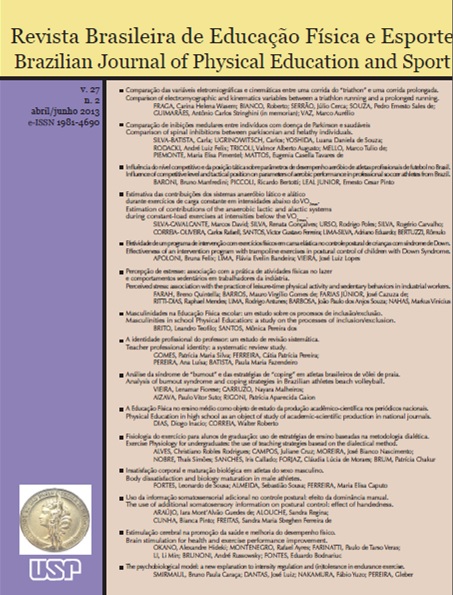The use of additional somatosensory information on postural control: effect of handedness
DOI:
https://doi.org/10.1590/S1807-55092013005000011Keywords:
Equilibrium, Postural sway, Sensory feedback, Tactile information, VisionAbstract
In this study we investigated the effect of handedness and vision on the use of additional somatosensory information provided by the light touch in postural control. Fifteen right-handed, young adults quietly stood on a force plate with a) eyes open or closed and b) arms hanging along the body or with the right or left index finger in contact with a rigid bar. We assessed the center of pressure (CP) area and CP mean sway amplitude and velocity in anterior-posterior and medial-lateral directions. The results revealed a reduction of these measures in the touch conditions and increase with the eyes closed, except when the touch was performed with right index fingertip. The grip strength was greater for the right hand, while the cutaneous sensitivity and the forces applied on the bar were similar between the two sides of the body. These results suggested an effect of the handedness and vision in the use of additional somatosensory information on the postural control.Downloads
Download data is not yet available.
Downloads
Published
2013-06-01
Issue
Section
Comportamental e Pedagógica
License
Todo o conteúdo da revista, exceto onde está identificado, está licenciado sob uma Licença Creative Commons (CC-BY)
How to Cite
Araújo, I. M. G. de, Alouche, S. R., Cunha, B. P., & Freitas, S. M. S. F. de. (2013). The use of additional somatosensory information on postural control: effect of handedness. Brazilian Journal of Physical Education and Sport, 27(2), 305-313. https://doi.org/10.1590/S1807-55092013005000011


